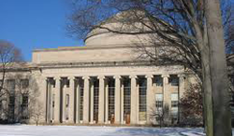
Integration and Operation of Post-combustion Capture System on Coal-fired Power Generation: Load Following and Solvent Storage
Plant Power: The Cost of Using Biomass for Power Generation and Potential for Decreased Greenhouse Gas Emissions
Water Footprint of Electric Power Generation: Modeling Its Use and Analyzing Options for a Water-scarce Future
Carbon Dioxide Capture by Chemical Absorption: A Solvent Comparison Study
Feasibility of Air Capture
Using Auxiliary Gas Power for CCS Energy Needs in Retrofitted Coal Power Plants
Strategies for Demonstration and Early Deployment of Carbon Capture and Storage: A Technical and Economic Assessment of Capture Percentage
The Future of Coal
Project: The Feasibility of Air Capture
Research Team: Manya Ranjan, Howard Herzog, and Jerry Meldon (Tufts)
Sponsor: Carbon Sequestration Initiative
Year: 2010
Abstract:
Capturing CO2 from air, referred to as Air Capture, is being proposed as a viable climate change mitigation technology. The two major benefits of air capture, reported in literature, are that it allows us to reduce the atmospheric carbon concentration, the only technology to do so, and that it can tackle emissions from distributed sources. Technically, air capture is not a new technology; industrial applications can be traced back to the 1930s.
This thesis explores the feasibility of this technology as a climate change mitigation option. Two different pathways of air capture are assessed in this dissertation, direct air capture, which uses a chemical process to capture CO2 and biomass coupled with carbon capture and sequestration, which utilizes the biological process of CO2 capture by biomass.
The cost of direct air capture reported in literature is in the range of $100/tC and $500/tC ($27/tCO2 - $136/tCO2). A thermodynamic minimum work calculation performed in this thesis shows that just the energy cost of direct air capture would be in the range of $1540-$2310/tC ($420-$630/tCO2) or greater. To this, one must add the capital costs, which will be significant. This shows that the cost of this technology is probably prohibitive. The difficulty of air capture stems from the very low concentration of CO2 in air, about 400 ppm. A section in this work elaborates on the difficulties associated with designing such an absorption system for direct air capture.
The pathway of biomass coupled with carbon capture and sequestration looks more promising from a cost perspective. This work puts its avoided cost in the range of $150/tCO2 to $300/CO2. However, the land requirement of this process is a concern. Sequestering 1 Gt of CO2 this way will require more than 200,000 square miles of land.
In summary, direct air capture has a prohibitively high mitigation cost, which is not comparable to the other climate change mitigation options. Such high costs make relying on this technology for mitigating carbon emissions a poor policy decision. The pathway of biomass coupled with carbon capture and sequestration has reasonable costs and could be used to offset certain emissions. However, the large land requirement may limit the amount of offsets available. All in all, air capture should not be considered as a leading carbon mitigation option.
Publications:
House, K.Z., A.C. Baclig, M. Ranjan, E.A. van Nierop, J. Wilcox, H.J. Herzog, "Economic and Energetic Analysis of Capturing CO2 from Ambient Air," Proceedings of the National Academy of Sciences, Vol 108:51, pp 20428-20433, December (2011). <PDF> <MIT Press Release> <Letter to Editor>
Ranjan, M., and H.J. Herzog, "Feasibility of Air Capture," Energy Procedia, Vol 4, pp 2869-2876, Feb (2011). <PDF>
Ranjan, M., "Feasibility of Air Capture," M.I.T. Masters Thesis, June (2010). <PDF>